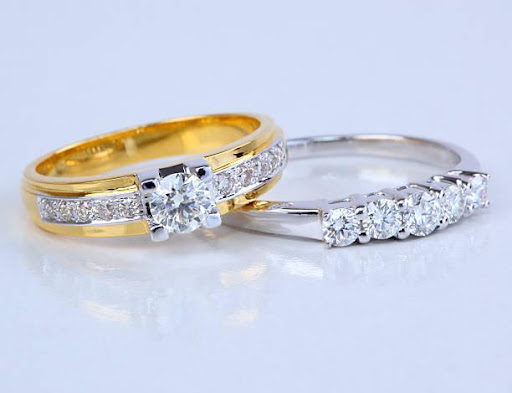
A diamond engagement ring is a symbol of your love and commitment to your partner, but it's also an investment in their future. Whether you're looking for a simple solitaire or something more extravagant, there are some things you should consider when buying an diamond engagement ring. First, choose the type of cut that best reflects your personality: round, square or princess-cut diamonds will work well with most fingers. If you want something more unique, try marquise or heart shapes—they'll still be elegant yet unusual enough that everyone will know they're not from the Diamond Registry's.
Cut refers to the quality of a diamond and is graded from poor to excellent. The cut is the most important factor in how a diamond sparkles, as it determines how light travels through it and where it returns to the eye. An ideal cut will allow for maximum brightness and fire, which are very important factors when buying an diamond engagement ring or diamond wedding band for your future bride-to-be. The shape should also be considered when evaluating a diamond's beauty, but its brightness and fire can only be determined by looking at its proportions instead of its shape. A round brilliant cut with 58 facets may look beautiful on paper (and in pictures), but if they're too far off from being perfect, then you'll miss out on some serious sparkle!
Clarity is the degree to which a diamond is free from internal characteristics that are visible to the naked eye. Diamonds with low clarity are more affordable and typically have fewer inclusions, but they’re not as beautiful in person.
Diamonds with high clarity (commonly referred to as VS1-2) may cost you more than one with lower clarity (SI1-3), but they’re absolutely worth it because they make up for their increased price by looking incredibly clear and sparkly under any light source. How do you know if your diamond has high clarity? Here are some tips:
Look for an “eye clean” grade on the certificate of authenticity that comes with every diamond purchase from Diamond Registry. This means there aren't any noticeable inclusions on either side of the stone when viewed through 10x magnification, which makes it easier to see all its beauty from afar!e serious sparkle!
The color of a diamond is the most important factor when it comes to determining its value. In fact, diamonds are valued based on how closely their colors match those of other diamonds that have already been mined. Colorless diamonds, also known as “white” or “colorless” diamonds, are more valuable than colored diamonds because they don't have any brown or grayish tints; these are considered flaws in the stone's quality.
The GIA (Gemological Institute of America) has developed a grading system for different colors: D-F and G-J range from completely colorless to light yellow; K and L range from light yellowish green to green; M and N range from light blue to dark blue; O-R includes all other colors like pink and purple. When you're looking at buying an engagement ring or wedding band set with a significant center stone (like an emerald cut), it's important to make sure that what you choose falls within this system so there won't be any surprises when it comes time for appraisals later down the line!
The setting is the band of your ring. It's also where you can make a statement and show off your personal style. There are many types of settings, but they all serve the same purpose: to hold your diamond securely in place so it doesn't fall out or become damaged. Here are some of the most popular choices:
You can find matching diamond wedding bands for all types of engagement rings on our website by following these steps:
Browse through our selection of styles and designs. We have everything from classic to modern, so there's something for everyone!
Take a look at the different cuts available (e.g., round cut, princess cut). See which one best represents who you are as a person and what kind of lifestyle you lead—you'll want to make sure that the shape matches with the type of lifestyle that you lead in order to ensure maximum satisfaction over time!
Sell your diamonds with ease with Diamond Registry’s comprehensive approach and vast global industry connections to help you find the best buyer for your diamond fast. Visit www.diamondregistry.com/sell-your-ring to take your first step to fast, easy and reliable way of selling your diamond.
Want to check and calculate diamond per carat instantly? Go to DR’s diamond price calculator www.diamondregistry.com/diamond-price-list/#calc-move-to to know how. Reliable and trusted carat calculator in the diamond industry since!

